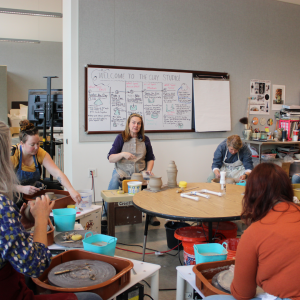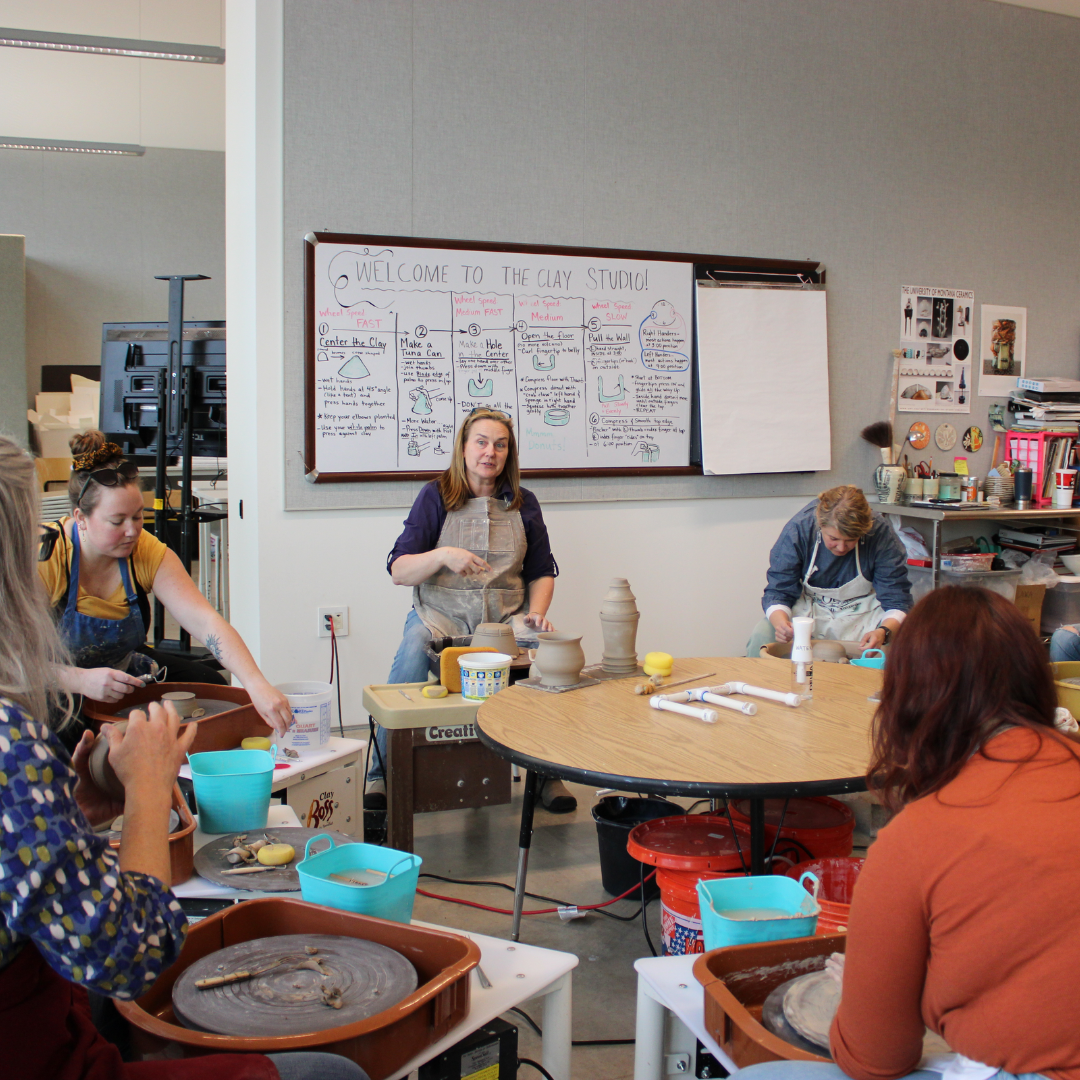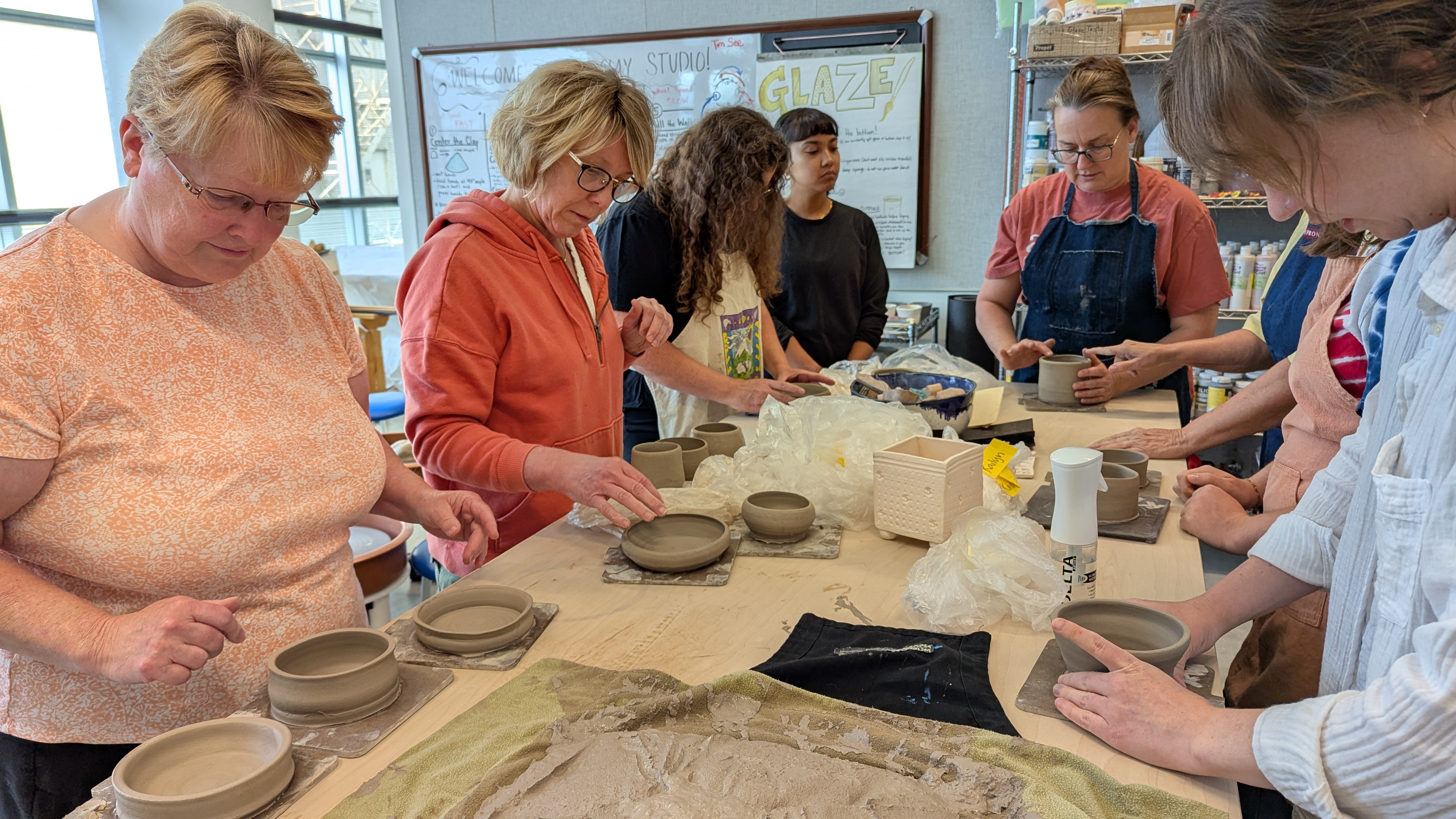
The Wheel That Grounds You
 Ask anyone who’s taken a clay class at the Figge Art Museum why they keep coming back, and you’ll hear a common thread: it helps them reset. Maybe they signed up to make a mug, a bowl, or to simply try something new, but found something even more meaningful. Clay provides a kind of mental rest, a reprieve from the fast-moving world, that many weren’t expecting.
Ask anyone who’s taken a clay class at the Figge Art Museum why they keep coming back, and you’ll hear a common thread: it helps them reset. Maybe they signed up to make a mug, a bowl, or to simply try something new, but found something even more meaningful. Clay provides a kind of mental rest, a reprieve from the fast-moving world, that many weren’t expecting.
“I was having a lot of personal struggles when I signed up,” said Rebecca, who began attending wheel classes in January. “I just wanted something I could escape to, something that would open up my brain and help me focus on anything else.”
Focus is built into the process. Clay demands attention, steady hands, consistent pressure, and a willingness to let go of perfection. And for many, that’s what makes it feel like a break. It pulls you out of your head and into the moment.
“If you’re not focused, the clay tells you,” said Laura, who is a Figge art instructor as well as the museum’s Studio Assistant and Clay Tech. “It’ll collapse, twist, wobble. The only way to get through it is to slow down and pay attention.”
Laura’s seen students from all walks of life come into her class carrying stress from work, school, or everyday life. Within minutes, she says, you see a shift in them. Shoulders drop, eyes stay on the wheel, and the noise of the outside world fades away.
Ann, a longtime studio volunteer and participant, said the effect was immediate. “When I first sat down at the wheel, I realized right away—you can’t be thinking about anything else,” she said. “I’m a school social worker. I do yoga and practice mindfulness. But this? This is next-level focus. You don’t have time to worry about what happened at work or what’s on your to-do list. You’re just here.”
The benefits aren’t just anecdotal. Research shows that working with clay can help ease stress, support emotional balance, and improve overall well-being. One recent study in Frontiers in Psychology found that even a single 45-minute session of clay art-making significantly reduced negative emotions and boosted positive ones—including feelings of calm, joy, and energy—compared to drawing or doing nothing at all.
The tactile nature of clay and the focus it requires play a big role. As one art therapist noted, shaping clay with your hands helps anchor your attention in the present moment, giving your mind a rest and your body something meaningful to do.
“It’s like meditation with mud,” said Atticus, a hand-builder who started taking classes after falling in love with the medium at Black Hawk College. “It gets you out of your head and into your body. And it’s forgiving. You mess up, you start again. No pressure.
The process of making is part of the appeal—but so is the space you’re creating in. Laura intentionally designed the studio to support slowing down. The wheels are arranged in a circle so students can see each other, ask questions, and feel supported. Mistakes aren’t just expected; they’re part of the lesson. “If you’re not wrecking,” she often says, “you’re not learning.”
 For Kim, who started taking classes with her sister, that freedom to wreck it, to make mistakes, is what keeps her coming back. “I’m not great at throwing,” she laughed. “But it’s still fun. It’s relaxing to just get your hands in there and focus on the process, even when the project doesn’t turn out.”
For Kim, who started taking classes with her sister, that freedom to wreck it, to make mistakes, is what keeps her coming back. “I’m not great at throwing,” she laughed. “But it’s still fun. It’s relaxing to just get your hands in there and focus on the process, even when the project doesn’t turn out.”
Many of the Figge’s clay students describe working with clay as meditative, but unlike traditional meditation, where the goal is to clear your mind, clay gives you something specific to focus on. It’s about syncing your breath with your hands. It’s about feeling the pressure of the clay and adjusting in real time. “There’s no part of the clay you can rush,” Laura said. “It slows you down. It demands your full attention. And that’s a good thing.”
Whether you’re navigating grief, burnout, boredom, or just the daily grind, clay offers a rare opportunity to reset—a reset that brings you back to yourself. It quiets perfectionism, eases overthinking, and reminds you that messiness and mistakes are part of the growth process. “You get to make something. You get to focus on just one thing for a while,” Laura said. “And when you leave, you’re in a different headspace than when you walked in. Every single time.”
Curious to try it?
The Figge offers clay classes for beginners and seasoned makers alike as well as Open Studio time for ongoing practice. Whether you’re looking to center clay, or just center yourself, it’s a good place to start.





